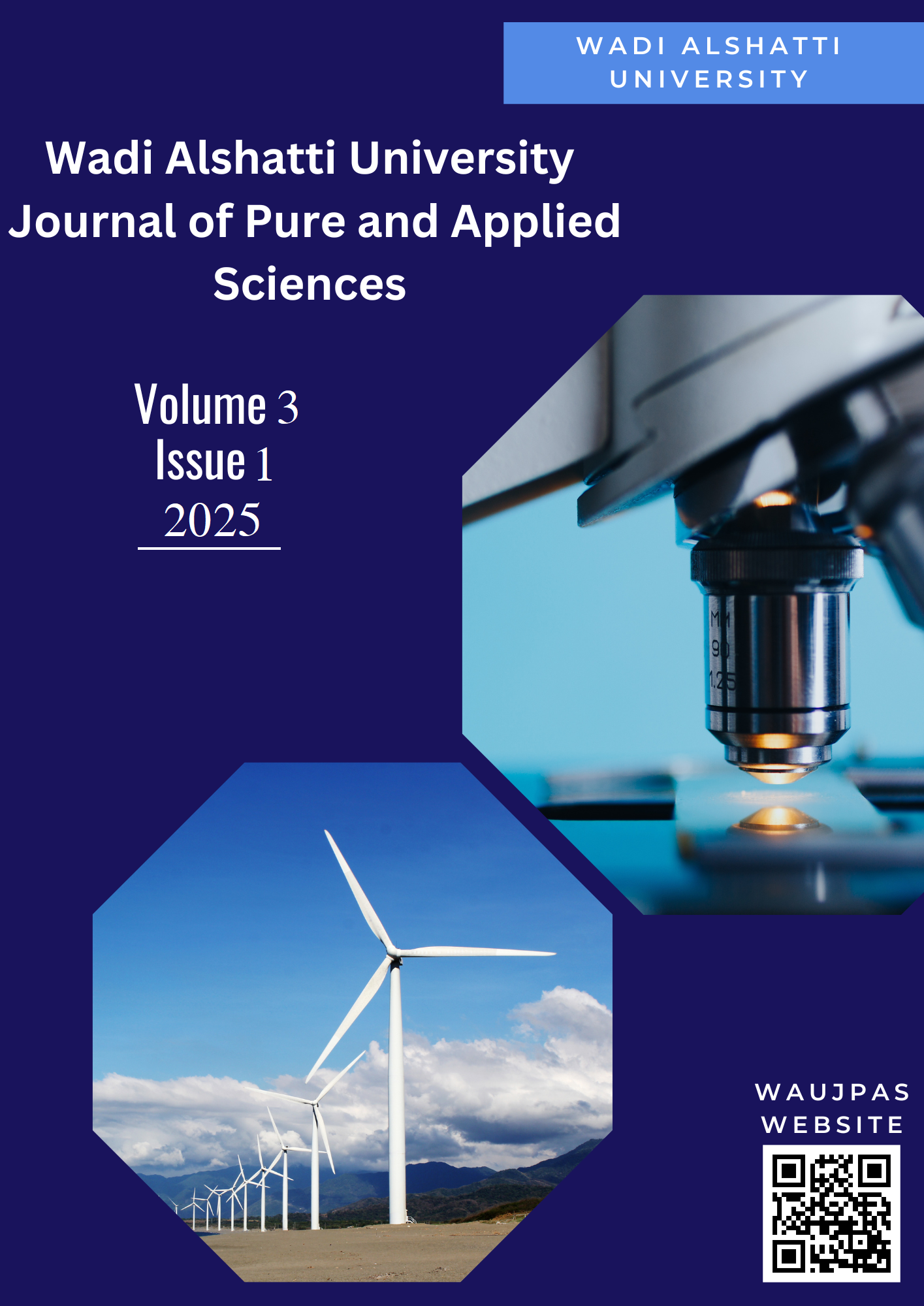A Brief Overview of Hybrid Renewable Energy Systems and Analysis of Integration of Isolated Hybrid PV Solar System with Pumped Hydropower Storage for Brack city - Libya
DOI:
https://doi.org/10.63318/waujpasv3i1_22Keywords:
Pumped hydro storage, Hybrid renewable energy, Solar energy, Sizing optimization, LibyaAbstract
The sporadic characteristics of adjustable renewable energy sources, along with fluctuating energy
consumption, require an effective long-term energy storage solution. Pumped Hydroelectric
Storage (PHS) has demonstrated its economic feasibility as an electricity storage technology and
its compatibility with Renewable Energy Systems (RESs). The present study proposes a
straightforward and effective methodology for the optimal size of a pumped hydro storageintegrated
combined photovoltaic solar energy system (PV) for ensuring a sustainable energy
supply for an urban population in Brack, Libya. A constrained optimization problem is used to
formulate the sizing process. The limitations are meant to provide for the operational conditions
and output uncertainty of RESs. Both the optimization procedure and the sizing technique are
explained in detail. Several operational scenarios were studied to establish the ideal size of the
hybrid PV energy system and the PHS. The proposed system consists of 500 MW of PV solar field
and 5,770 MWh of storage capacity, generating enough energy to meet an estimated load of
590,019 MWh while preventing the emission of 611 tons of CO2. Energy exported to the grid,
levelized cost of electricity (LCOE), and system investment are also discussed.
Downloads
Published
Issue
Section
License

This work is licensed under a Creative Commons Attribution-NonCommercial 4.0 International License.
This journal uses Creative Commons Attribution-Noncommerical 4.0 International License (CC BY-NC 4.0), which permits use, sharing, adaptation, distribution and reproduction in any medium or format, as long as you give appropriate credit to the original author(s) and the source, provide a link to the Creative Commons license, and indicate if changes were made. To view a copy of this license, visit https://creativecommons.org/licenses/by-nc/4.0/.
Copyright of articles
Authors retain copyright of their articles published in this journal.





